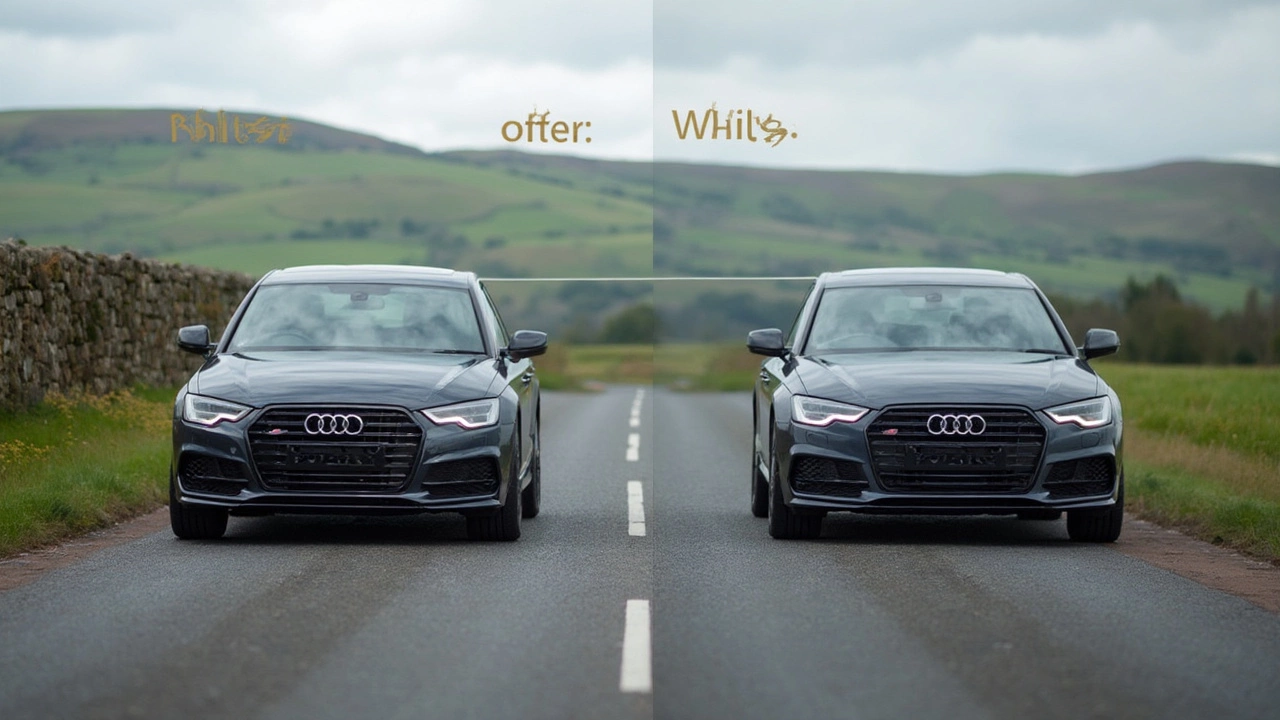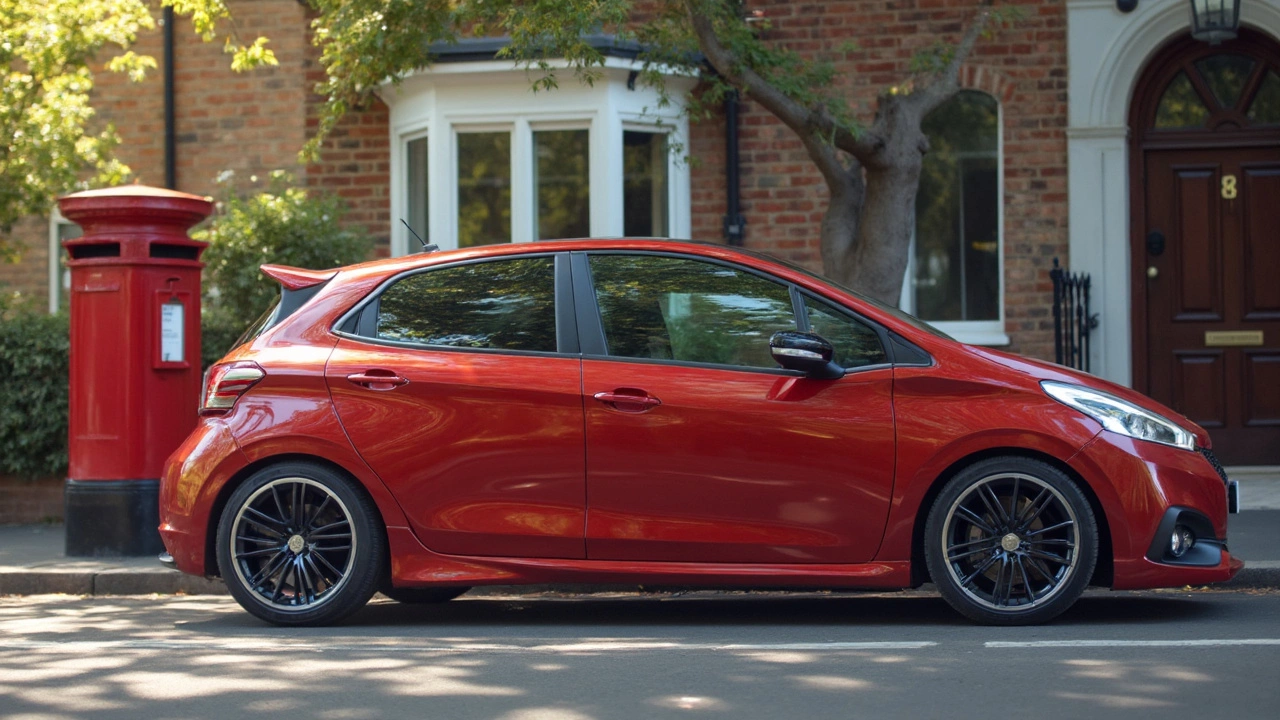If you’ve ever noticed a car sitting just right—wheels lined up perfectly with the edge of the fender—it’s a safe bet they’re using spacers. But here’s where most people get it wrong: spacers aren’t just for show. They do more than help your ride look beefier.
Maybe you’ve swapped to bigger brakes, or tried squeezing on wider tires, and suddenly you’re dealing with rubbing or awkward gaps. Spacers handle these headaches fast by pushing your wheels out a bit, giving you the clearance you need without fancy or expensive custom wheels.
And let’s talk about how your car actually feels to drive. A wider stance isn’t just about attitude—it means your tires grip the road better, especially in corners. That’s why you’ll see spacers on more than a few track cars and off-road rigs. You feel a difference when turning hard, and the whole thing just feels more planted.
- Enhanced Stability and Handling
- Better Tire Fitment and Clearance
- Boosted Visual Appeal and Customization
- Tips for Choosing and Installing Wheel Spacers
Enhanced Stability and Handling
Pop on a set of wheel spacers and the first thing you’ll notice is how your car hugs the road tighter. When you widen the track—meaning the distance between the wheels on the same axle—you change how weight shifts through turns. The car is less likely to lean like a boat. It just feels flatter and more confident, especially when you’re taking on curves or dodging potholes.
This added stability isn’t just a myth. Even automakers use wider tracks on performance and off-road models for exactly this reason. It distributes the car’s weight better, lowering the risk of a rollover during quick maneuvers. Ever wondered why SUVs and trucks with spacers feel less twitchy on dirt or gravel? That’s the spacer effect in action—wider stance equals more control when things get bumpy.
If you hit the track or love spirited driving, spacers give you a bit of an edge without a pile of mods. They let you run wider tires, which equals more grip. More rubber on the road means better cornering and more confident braking, too. It’s a simple mod that makes your car feel more stable right out of the driveway.
But here’s a quick tip: not all spacers are made equal. Always go for quality aluminum or steel types and get the right thickness for your setup. Sloppy or cheap spacers can wreck your handling and even cause vibrations at speed. Done right, though, you’ll feel the road in all the good ways—safe, grippy, and controlled.
Better Tire Fitment and Clearance
Fitting wider tires or wheels with the wrong offset is a classic headache. Sometimes, your shiny new wheels just don’t clear the fender, or your grippy tires scratch up the inside of your wheel well. That’s where wheel spacers step in and save the day. By pushing your wheels out from the hub, spacers make extra room for tires that would otherwise rub or not fit at all.
This isn’t just a random tip—car owners run into tire clearance issues all the time after performance upgrades. For example, swapping to aftermarket wheels with a higher offset can make the tires sit too close to the suspension components. Instead of replacing expensive wheels, you can use a spacer as thin as 5mm to gain crucial space. Many folks also add spacers after a brake upgrade, since bigger calipers can force wheels out or cause rubbing.
Here’s how wheel spacers step up when you’ve got tire fitment problems:
- Extra clearance between your wheel and suspension, avoiding dangerous rubbing.
- Room for wider or taller tire setups, especially if you’re going for an aggressive off-road or track look.
- Ability to run popular wheel styles that otherwise wouldn’t fit your car.
Want to see how different spacer thicknesses change your setup? Check out this quick chart based on real-world experience:
| Spacer Thickness | Tire Clearance Gained | Common Uses |
|---|---|---|
| 3mm-5mm | Small (fix minor rubbing with suspension/trim) | Fine-tuning offset, minor fitment issues |
| 8mm-12mm | Moderate (clear brake calipers and some fender issues) | Aftermarket brakes, medium tire upgrades |
| 15mm-25mm+ | Major (big wheel and tire combos or extreme stance) | Off-road, track cars, or show builds |
One last tip: Always check your vehicle manufacturer’s recommendations before adding spacers, especially on daily drivers. Go too thick, and you could cause fender rubbing or extra wear on suspension parts. But used properly, spacers are a smart fix when clearance is tight and you want your wheels and tires to fit just right.

Boosted Visual Appeal and Customization
There’s no denying it—nothing changes the look of your car quite like a set of wheel spacers. When you add spacers, you push your wheels out closer to the edge of the fender. This simple trick makes your stance look wider and meaner, and suddenly, your car gets noticed for all the right reasons at the next meet or even just in the parking lot.
Most stock wheels are tucked inward to avoid rubbing or meet strict factory safety rules. It’s a safe choice, but honestly, it can make even sporty models look awkward or conservative. Wheel spacers give you control to dial in that “flush” look—where the wheel and tire sit evenly with the wheel arch. That’s why you’ll see tons of custom builds running spacers, from track-ready Subarus to lifted trucks showing off at expos.
If you’re after a personal touch, spacers open up a lot of choices. Maybe you found a killer set of wheels, but the offset isn’t perfect, or your tires sit too far inside. Spacers let you fit those wheels perfectly without sacrificing safety or shelling out big bucks for custom rims. Plus, if you switch tire setups for summer and winter, spacers make it easy to keep your ride looking dialed all year.
Here’s a quick look at how much wheel offset can affect appearance:
| Spacer Size (mm) | Visual Effect | Common Use |
|---|---|---|
| 5 | Minor improvement, subtle flush | Daily drivers, minor alignment tweaks |
| 15 | Obvious flush look | Show cars, weekend performance |
| 25+ | Widebody, aggressive stance | Off-road, aggressive street cars |
If you want to make an impact or match a certain style, here are a few tips:
- Measure carefully. Every millimeter counts when it comes to fitment and avoiding fender rub.
- Think about your overall setup—tire width, wheel offset, and how much extra poke you want.
- Check your local laws. Super aggressive spacers might get you a look from the cops or fail inspection in some areas.
End of the day, wheel spacers are the quickest way to go from bland to bold. Whether you’re trying to match your car to an Instagram inspiration or just want it to look more muscular, the change is instant and can be fully reversed if you change your mind down the road.
Tips for Choosing and Installing Wheel Spacers
Don’t just grab the first set that pops up online—there’s a bit more to it if you don’t want headaches down the road. First up, check your vehicle’s bolt pattern. It has to match exactly with the spacers or they just won’t fit. You’ll usually see numbers like 5x114.3 stamped somewhere on your car’s spec sheet or original wheels.
Next, figure out the right thickness. Thicker spacers push the wheels out more, but too much can stress suspension parts or cause rubbing. Stick with the minimal thickness you need for your clearance or look—usually 10mm to 20mm works well for daily drivers. For off-road rides or super wide wheels, you might go more, but always double-check what your car can handle.
Material matters. High-quality spacers are made from billet aluminum because it’s strong, lightweight, and resists corrosion. If you see cheap steel or plastic options, skip them—a set of bad spacers can mess with balance or even fail while driving.
Now for the install. Follow these steps and you’ll be set:
- Clean the mounting surfaces thoroughly. Even a little dirt or rust can keep spacers from sitting right.
- Test fit everything before tightening. Make sure the wheel spacers and wheels bolt on smoothly and don’t hit suspension or brakes.
- Use a torque wrench, not just a regular wrench, to get lug nuts snugged to the exact spec your car’s manual calls for. Bad torque is a recipe for wheels coming loose.
- If you’re not confident with tools, get a pro to help. A quick install fee is way cheaper than wrecked wheels or a repair bill later.
Lastly, re-torque the lugs after about 50 miles of driving. Spacers and wheels can settle a bit, and you want everything locked down. Follow these tips, and you’re good to go with safer, better-looking wheels.




